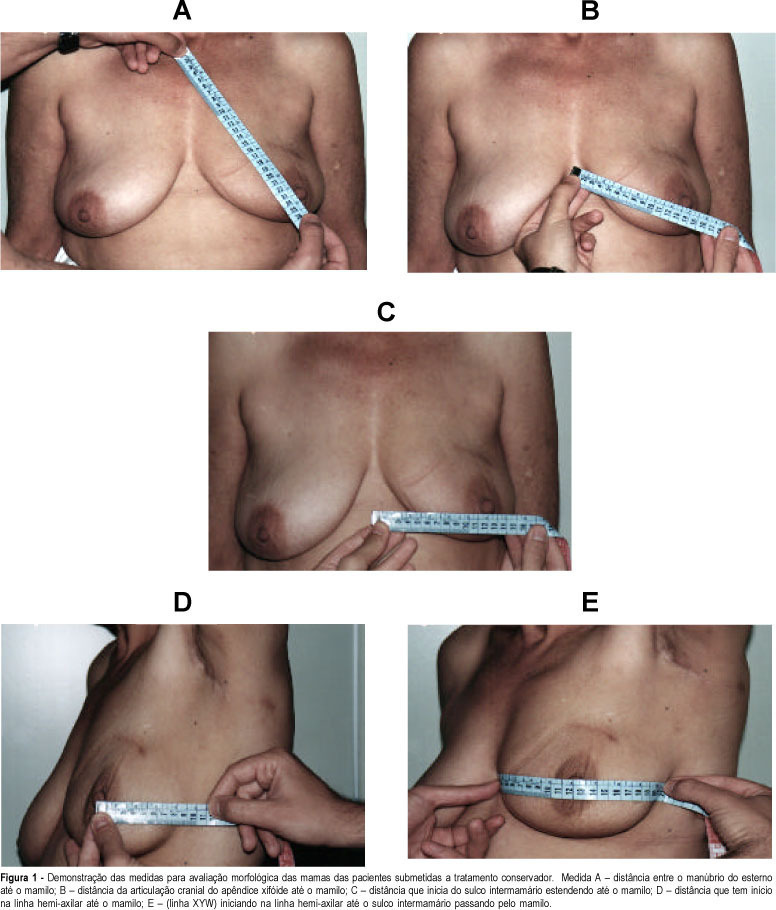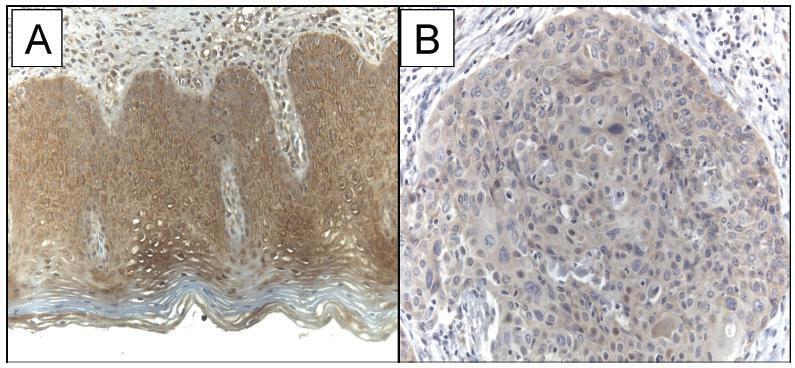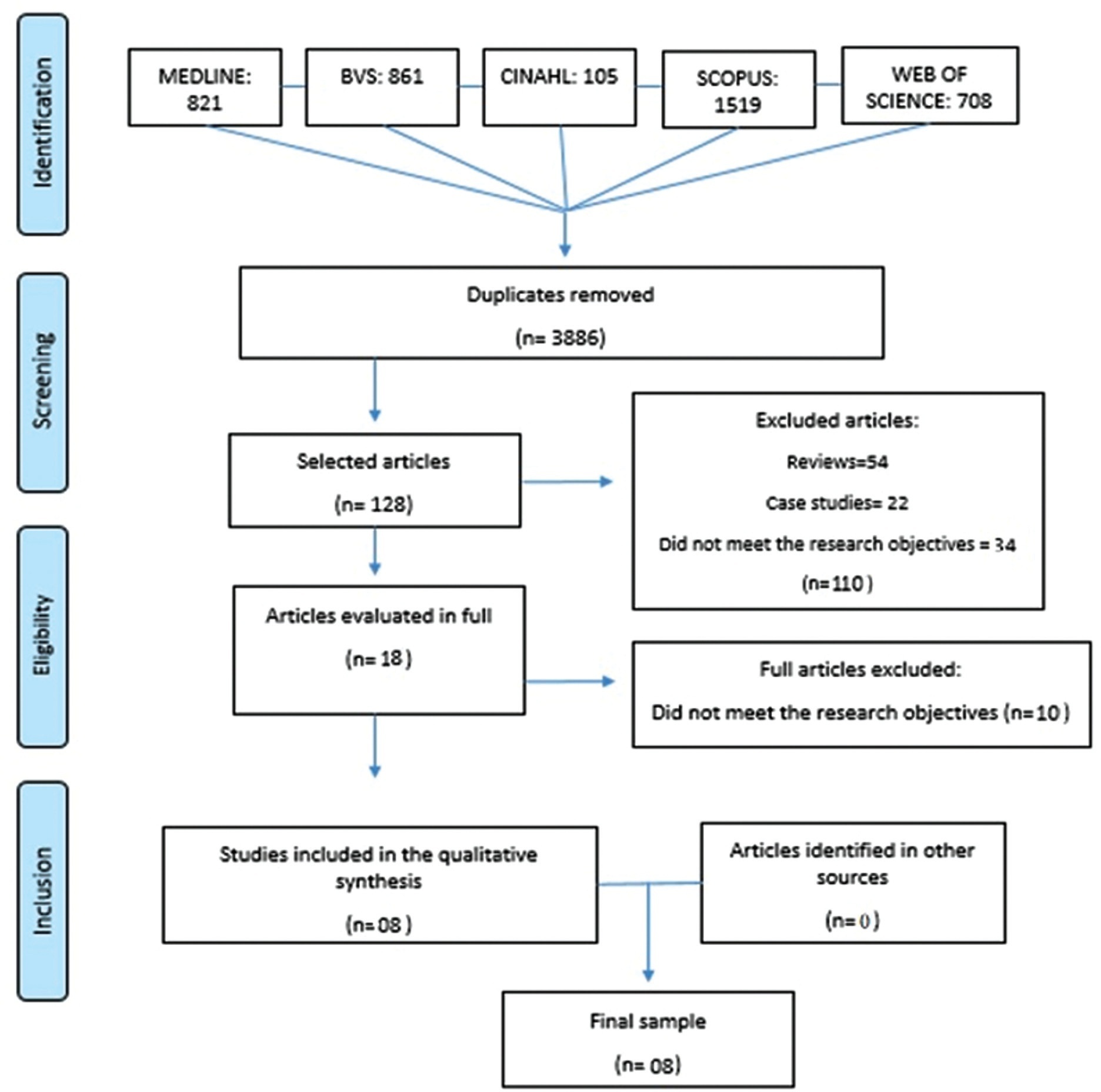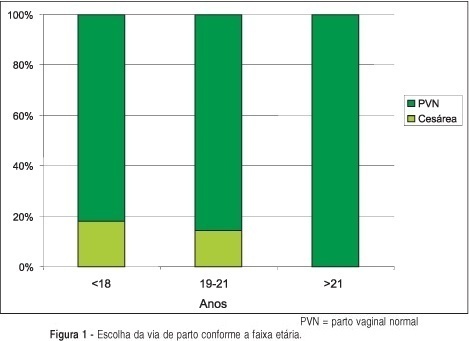Summary
Revista Brasileira de Ginecologia e Obstetrícia. 2014;36(2):79-83
DOI 10.1590/S0100-72032014000200006
To investigate the presence of depressive symptoms in women with chronic pelvic
pain.
This descriptive cross-sectional study was performed with women aged 18 years or
older, diagnosed with chronic pelvic pain, with no pregnancy history in the
previous year, and with no cancer history. The sample was established by
calculating the representative sample, estimated as 50 women. All women were
undergoing treatment at a gynecology outpatient clinic, referred by the primary
health care network of the Brazilian national health system. Data collection was
performed from October2009 to May 2010. The women's sociodemographic, economic and
clinical characteristics were analyzed. Pain intensity was evaluated using a
visual analogue scale. The depressive symptoms were investigated using Beck's
Depression Inventory. Statistical analysis was performed using position measures
(mean, median), dispersion (standard deviation) and the χ2 test. Values
of p≤ .05 were considered statistically significant.
The participants' mean age was 41.6±9.4 years. The following features
predominated: secondary education level; pardo (brown) skin color; Catholic
religion; and living with a steady partner. Most (98%) were economically active
and worked with general domestic services. Regarding the participants' subjective
perception of pain, 52% reported experiencing intense pain, while 48% reported
experiencing moderate pain. Most women (52%) had been living with pain for five
years or less, and 30%, for over 11 years. The mean BDI score was 17.4 (±9.4). It
was observed that 58% of the women presented mild, moderate and severe depressive
symptoms according to the BDI. The most frequent depressive symptoms were
fatigability, loss of libido, irritability, difficulty to work, somatic
preoccupations, crying, dissatisfaction, sadness, and insomnia.
Depressive symptoms were frequent among these women suffering with chronic pelvic
pain.
Summary
Revista Brasileira de Ginecologia e Obstetrícia. 2000;22(2):79-87
DOI 10.1590/S0100-72032000000200004
Purpose: to assess the esthetic results and personal satisfaction of patients submitted to conservative surgery for cancer of the breast. The study was conducted on 44 patients with breast cancer diagnosed at the mastology outpatient clinic of HCFMRP-USP from January 1990 to December 1994, who fulfilled inclusion criteria according to a previously established protocol. The study consisted of analysis of the esthetic results after conservative treatment of breast cancer and analysis of the degree of patient satisfaction, with a comparison of the morphometry of the treated breast to that of the normal breast. The results were obtained on the basis of five previously established parameters using the esthetic evaluation score proposed by Westreich¹. Methods: of the 44 patients studied, 10 had been submitted to neoadjuvant chemotherapy (CT) because they presented locally advanced tumors, and 2 because of an unfavorable tumor/breast ratio for conservative treatment. Mean follow-up time was 65 months. All 27 patients followed-up at the outpatient clinic received a convocation letter. An evaluation questionnaire was applied to the 20 patients who came to the clinic, followed by breast measurement. Fifteen of these patients had been submitted to surgery with separate incisions and 5 to surgery with a single incision. Results: according to morphometry, the results were classified as excellent in 17 cases (85%), as good in two (10%), and as poor in only one case (5%), an evaluation comparable to the subjective evaluation made by the patients themselves. Considered separately, both measurement "A" (distance from the manubrium of the sternum to the nipple) and measurement "B" (distance from the cranial articulation of the xyphoid appendix to the nipple) showed a greater discriminative power than the measurements as a whole, since with these measurements the cases classified as poor by the patients would have also been classified as poor according to these same criteria separately (A and/or B). Conclusion: there was a significant difference in esthetic results between surgical treatment with a single incision or separate incisions, with the separate incision providing better results. There was high agreement between the classification made by the patients and the morphometric results obtained by us.

Summary
Revista Brasileira de Ginecologia e Obstetrícia. 2002;24(2):79-79
DOI 10.1590/S0100-72032002000200001
Summary
Revista Brasileira de Ginecologia e Obstetrícia. 2018;40(2):79-85
The current study evaluated the expression of WW domain-containing oxidoreductase (WWOX), its association with clinicopathological features and with p53, Ki-67 (cell proliferation) and CD31 (angiogenesis) expression in patients with invasive cervical squamous cell carcinoma (ICSCC). To the best of our knowledge, no other study has evaluated this association.
Women with IB stage-ICSCC (n = 20) and women with uterine leiomyoma (n = 20) were prospectively evaluated. Patients with ICSCC were submitted to type BC1 radical hysterectomy and pelvic lymphadenectomy. Patients in the control group underwent vaginal hysterectomy. Tissue samples were stained with hematoxylin and eosin for histological evaluation and protein expression was detected by immunohistochemistry studies.
The WWOX expression was significantly lower in the tumor compared with the expression in thebenign cervix (p = 0.019). TheWWOXexpressionwas inversely associated with the CD31 expression in the tumor samples (p = 0.018). There was no association betweentheWWOXexpression with the p53 expression (p = 0.464)or the Ki-67expression (p = 0.360) in the samples of invasive carcinoma of the cervix. There was no association between the WWOX expression and tumor size (p = 0.156), grade of differentiation (p = 0.914), presence of lymphatic vascular invasion (p = 0.155), parametrium involvement (p = 0.421) or pelvic lymph node metastasis (p = 0.310) in ICSCC tissue samples.
The results suggested that WWOX may be involved in ICSCC carcinogenesis, and this marker was associated with tumor angiogenesis.

Summary
Summary
Revista Brasileira de Ginecologia e Obstetrícia. 2023;45(12):790-795
To compare cytological and histological results from women > 64 years old who followed the Brazilian national cervical cancer screening guidelines with those who did not.
The present observational retrospective study analyzed 207 abnormal cervical smear results from women > 64 years old in a mid-sized city in Brazil over 14 years. All results were reported according to the Bethesda System. The women were divided into those who followed the screening guidelines and those who did not.
Atypical squamous cells of undetermined significance and low-grade squamous intraepithelial lesion cytology results were found in 128 (62.2%) cases. Of these, 112 (87.5%) had repeated cytology with positive results. The other 79 (38.1%) with abnormal results should have been referred to colposcopy and biopsy. Out of 41 (51.9%) biopsied women, 23 (29.1%) had a confirmed diagnosis of neoplasia or precursor lesion. In contrast, among the 78 (37.7%) biopsied patients, 40 (51.3%) followed the guideline recommendations, with 9 (22.5%) positive biopsies. Of the 38 (48.7%) women who did not follow the guidelines, there were 24 (63.1%) positive results. Women who did not follow the guidelines demonstrated higher chances of cancer and precursor lesions (odds ratio [OR]: 5.904; 95% confidence interval [CI]: 2.188–15.932; p = 0.0002).
Women > 64 years old who did not follow the national screening protocol showed significant differences in the frequency of abnormal results and severity of diagnosis compared with those who followed the protocol.
Summary
Revista Brasileira de Ginecologia e Obstetrícia. 2022;44(8):790-796
This systematic review aims at describing the prevalence of urinary and sexual symptoms among women who underwent a hysterectomy for cervical cancer.
A systematic search in six electronic databases was performed, in September 2019, by two researchers. The text search was limited to the investigation of prevalence or occurrence of lower urinary tract symptoms (LUTS) and sexual dysfunctions in women who underwent a hysterectomy for cervical cancer. For search strategies, specific combinations of terms were used.
A total of 8 studies, published between 2010 and 2018, were included in the sample. The average age of the participants ranged from 40 to 56 years, and the dysfunctions predominantly investigated in the articles were urinary symptoms (n= 8). The rates of urinary incontinence due to radical abdominal hysterectomy ranged from 7 to 31%. The same dysfunction related to laparoscopic radical hysterectomy varied from 25 to 35% and to laparoscopic nerve sparing radical hysterectomy varied from 25 to 47%. Nocturia ranged from 13%, before treatment, to 30%, after radical hysterectomy. The prevalence rates of dyspareunia related to laparoscopic radical hysterectomy and laparoscopic nerve sparing radical hysterectomy ranged from 5 to 16% and 7 to 19% respectively. The difficulty in having orgasm was related to laparoscopic radical hysterectomy (10 to 14%) and laparoscopic nerve sparing radical hysterectomy (9 to 19%).
Urinary and sexual dysfunctions after radical hysterectomy to treat cervical cancer are frequent events. The main reported disorders were urinary incontinence and dyspareunia.

Summary
Revista Brasileira de Ginecologia e Obstetrícia. 2004;26(10):791-798
DOI 10.1590/S0100-72032004001000006
PURPOSE: to find out the preference in regard to the way of delivery among primigravidae, as well as the reasons for their choice, in order to improve the quality of the doctor-patient relationship. METHODS: a qualitative-type study was conducted through analysis of the collective subject, including primigravidae attended from September to November 2003 at the emergency rooms of the hospital of the "Faculdade de Medicina de Jundiaí". A questionnaire, specially developed to accomplish the proposed objectives was applied. An informed and free consent, signed by the pregnant woman and one of the researchers in charge was obtained. This questionnaire was based on doubts of patients attended at this hospital some months before the trial. For the purpose of sample standardization, the patients' selection followed some inclusion criteria: age above 16, primigravidae that were receiving prenatal assistance and a post-informed and free consent. Mental disorders and clinical and/or obstetric pathologies that could interfere in the patient's choice were considered exclusion criteria. RESULTS: the studied population had as prevailing profile women in the third quarter of gestation, above 21 years of age, white, married and with completed school. Most of the women (90%) preferred vaginal delivery for the following main reasons: ease to be done (94%) and the fear of suffering and pain during the postpartum period caused by cesarean section. There was a relationship between older and married women and the preference for vaginal delivery, with no significant difference between races. CONCLUSION: these results show an enormous contrast between women's preference and the high cesarean section rates in Brazil. We conclude that there may be a lack of information and dialogue between the health professionals and patients about the possible difficulties, doubts and anxieties that involve the women's choice for a specific way of delivery. From an ethical point of view, we conclude that obstetricians should question every cesarean section indication and take into account the women's right to choose, without ignoring clinical criteria, when making the medical decision about the way of delivery.
